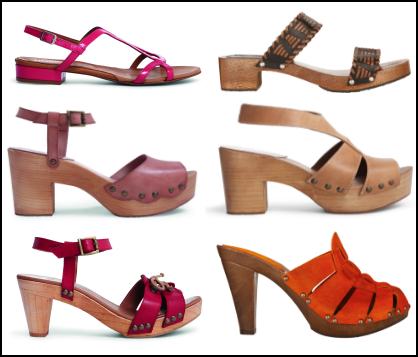Clogs Footwear
A clog is a type of footwear made in part or completely from wood. Clogs are used worldwide and although the form may vary by culture, within a culture the form often remained unchanged for centuries.Traditional clogs were often worn in heavy labor. Today they remain in use as protective clothing in agriculture and in some factories and mines. Although clogs are sometimes negatively associated with cheap and folkloric footwear of farmers and the working class, some types of clogs are considered as fashion wear today, such as Swedish clogs or Japanese geta.
Clogs are also used in several different styles of dance. When worn for dancing an important feature is the sound of the clog against the floor. This is one of the fundamental roots of tap, but with the tap shoes the taps are free to click against each other and produce different sound to clogs.
The Oxford English Dictionarydefines a clog as a "thick piece of wood", and later as a "wooden soled overshoe" and a "shoe with a thick wooden sole".
Clogs are found in three main varieties: whole foot, wooden soled and overshoes.
- Whole foot clogs make the complete shoe out of wood, such as the familiar Dutch klomp. They are also known as "wooden shoes". Whole foot clogs can give sufficient protection to be used without additional reinforcements.
- Wooden soled clogs use wood for the sole only. Wooden soled clogs come with a variety of uppers:
- complete uppers made from leather or similar material (see English clogs). For more protection, they may have steel toecaps and/or steel reinforcing inserts in the undersides of the soles
- open sandal type fitting (see Japanese geta)
- toe peg styles (see Indian paduka)
- Overshoes are wooden soles with straps designed to be worn over other footwear for protection, commonly known as pattens.








No comments:
Post a Comment